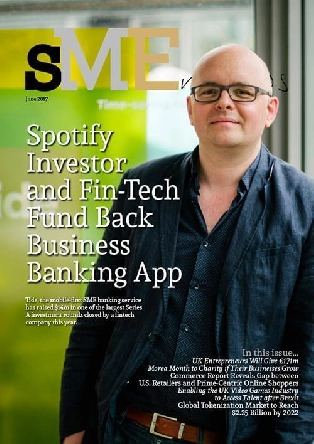As the metaverse evolves, global conglomerates expand their reach into the virtual sphere. CEO at Crypto House Capital, Tomas Nascisonis, explains how small and medium-sized enterprises (SMEs) can also take advantage of extended reality (XR) technologies by creating digitally immersive websites and owning virtual real estate.
Larger business entities have adopted extended reality (XR) technologies into their infrastructures, broadening the possibilities of the digital customer experience. A growing number of devices and digital platforms also now feature virtual spaces with fully immersive environments, a technological expansion broadly defined as the metaverse.
As interest in digital realms grows at larger scales, small and medium-sized enterprises (SMEs) question the benefits and feasibility of entering the metaverse. CEO at Crypto House Capital, Tomas Nascisonis, highlights two ways SMEs can leverage the opportunities of the metaverse: creating immersive websites and using virtual real estate for workspaces.
Next-gen technology for better UX
Larger companies have already incorporated gamification into the customer journey, combining elements of online shopping, mobile gaming, and customizable avatars. According to Nascisonis, SMEs could gain a competitive edge by not staying behind, as having a virtual presence would not cost more than designing a standard website and requires no tech experience to operate. That said, the final cost, required equipment, and technical know-how will depend on the pursued depth of customer interaction and the extent of output rendered.
“I would advise starting with an introductory presence in the metaverse and then expanding on demand, which can be limitless compared to two-dimensional online spaces. As the technology grows, the metaverse will be the representation of choice for companies that want to stay relevant.”
Owing to recent technological breakthroughs, augmented reality (AR) and virtual reality (VR) equipment have grown more accessible, allowing for mixing in spatially rendered 3D content into the digital customer experience. With this in mind, as time goes on, SMEs could grow their metaverse space and display products and services within a virtual showroom, sidestepping the need for face-to-face interaction while simultaneously opening avenues for innovations in marketing and customer engagement.
“Interactive websites offer a unique way for customers to experience your product or service in an interactive fashion, which offers much more creative freedom than traditional web design,” says Nascisonis.
Virtual workspaces to boost engagement
Apart from the customer-facing benefits of the metaverse, virtual real estate, or metaspaces, could offer an alternative to traditional workspaces. As the COVID-19 pandemic pushed the workforce into hybrid or fully-remote work settings, many employees now occupy different geographic locations, posing the problem of scheduling meetings for employees in different time zones while also maintaining engagement.
“One potential use for virtual real estate is a virtual office space and meeting rooms for collaborative work. As more businesses go remote, there is a growing demand for virtual office spaces that offer all the amenities of a traditional office without the overhead costs, which could include features like video conferencing capabilities, shared workspaces, and even private offices for rent. And since it exists entirely online, a virtual office could be located anywhere in the world, with meetings taking place all at once or asynchronously.”
Nascisonis concludes by predicting that hosting a meeting in the metaverse, as opposed to apps like Zoom, would provide effortless, worldwide communication, as people could express themselves through avatars and interact in virtual rooms immersive enough to simulate real-world environments.







